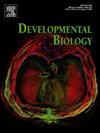Effects of age on the response to spinal cord injury: optimizing the larval zebrafish model
IF 2.1
3区 生物学
Q2 DEVELOPMENTAL BIOLOGY
引用次数: 0
Abstract
Zebrafish are an increasingly popular model to study regeneration after spinal cord injury (SCI). The transparency of larval zebrafish makes them ideal to study cellular processes in real time. Standardized approaches, including age at the time of injury, are not readily available making comparisons of the results with other models challenging. In this study, we systematically examined the response to spinal cord transection of larval zebrafish at three different larval ages (3-, 5-, or 7-days post fertilization (dpf)) to determine whether the developmental complexity of the larvae affects the overall response to SCI. We then used imaging and behavioral analysis to evaluate whether differences existed based on the age of injury. Injury led to increased expression of cytokines associated with the immune response; however, we found that the timing of specific inflammatory markers changed with the age of the injury. We also observed changes in glial and axonal bridging with age. Young larvae (3 dpf) were better able to regenerate axons independent of the glial bridge, unlike older larvae (7 dpf), consistent with results seen in adult zebrafish. Finally, locomotor experiments demonstrated that some swimming behavior occurs independent of glial bridge formation, further highlighting the need for standardization of this model and functional recovery assays. Overall, we found differences based on the age of transection in larval zebrafish, underlining the importance of considering age when designing experiments aimed at understanding regeneration.

年龄对脊髓损伤反应的影响:优化斑马鱼幼体模型。
斑马鱼是一种越来越受欢迎的研究脊髓损伤(SCI)后再生的模型。斑马鱼幼虫的透明使它们成为实时研究细胞过程的理想选择。标准化的方法,包括受伤时的年龄,并不容易获得,这使得与其他模型的结果比较具有挑战性。在这项研究中,我们系统地研究了斑马鱼幼虫在三个不同的幼虫年龄(受精后3、5和7天)对脊髓横断的反应,以确定幼虫的发育复杂性是否影响对脊髓损伤的总体反应。然后,我们使用影像学和行为分析来评估是否存在基于损伤年龄的差异。损伤导致与免疫反应相关的细胞因子表达增加;然而,我们发现特定炎症标志物的时间随着损伤的年龄而变化。我们还观察到神经胶质和轴突桥接随年龄的变化。与年长的幼鱼(7 dpf)不同,幼鱼(3 dpf)能够更好地独立于胶质桥再生轴突,这与成年斑马鱼的结果一致。最后,运动实验表明,一些游泳行为独立于胶质桥的形成,进一步强调了该模型和功能恢复分析标准化的必要性。总的来说,我们发现斑马鱼幼虫在横断年龄上存在差异,这强调了在设计旨在了解再生的实验时考虑年龄的重要性。
本文章由计算机程序翻译,如有差异,请以英文原文为准。
求助全文
约1分钟内获得全文
求助全文
来源期刊

Developmental biology
生物-发育生物学
CiteScore
5.30
自引率
3.70%
发文量
182
审稿时长
1.5 months
期刊介绍:
Developmental Biology (DB) publishes original research on mechanisms of development, differentiation, and growth in animals and plants at the molecular, cellular, genetic and evolutionary levels. Areas of particular emphasis include transcriptional control mechanisms, embryonic patterning, cell-cell interactions, growth factors and signal transduction, and regulatory hierarchies in developing plants and animals.
 求助内容:
求助内容: 应助结果提醒方式:
应助结果提醒方式:


